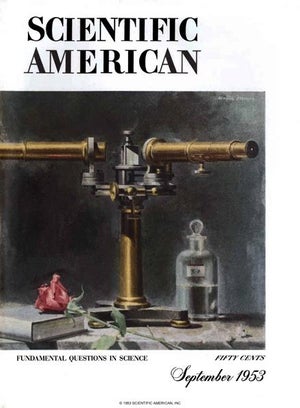Fundamental Questions in Science
An issue devoted to science in its strict sense: the interrogation of nature. This introduction raises the question: Does our society confuse science with applied science, and thus neglect the former?

You are currently logged out. Please sign in to download the issue PDF.
An issue devoted to science in its strict sense: the interrogation of nature. This introduction raises the question: Does our society confuse science with applied science, and thus neglect the former?
The wave-particle dualism afflicting modern physics is best resolved in favor of waves, believes the author, but there is no clear picture of matter on which physicists can agree
Electrical forces bind the electron to the atom, but they cause nuclear particles to fly apart. The powerful cohesion of protons and neutrons must be explained by a wholly different phenomenon
This question involves another one: How do these particles attain their awesome energy? They have told us much about the nature of the nucleus, and they promise to tell more about the universe
Some do and others do not, suggesting an evolutionary sequence. The answer awaits more knowledge of how the forces of turbulence and magneto-hydrodynamics affect the attenuated matter of space
These giant molecules are constructed in fantastic variety out of 22 amino acids. The mechanism of their synthesis is perhaps the greatest challenge facing the modern biochemist
An unspecialized egg gives rise to all the specialized tissues of an organism. The study of this marvelous phenomenon engages two disciplines of the modern biology: embryology and genetics
The means by which the brain stores the rich variety of human experience is completely unknown. The nerve physiologist tries to apprehend the mechanism with cleverly designed experiments
Some mathematicians argue that it is "statistical"; others, that it is "inductive." The author believes that there are two kinds, both essential to the future progress of science